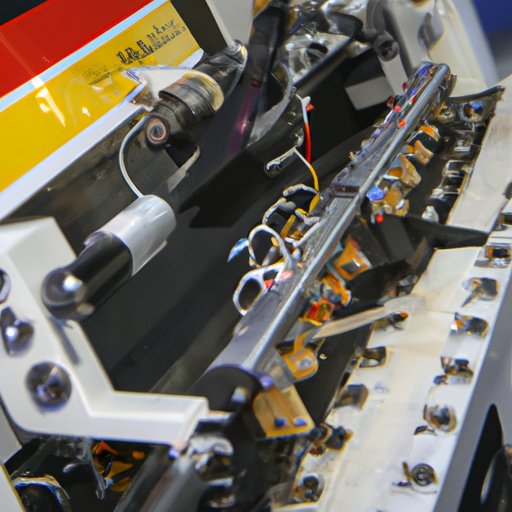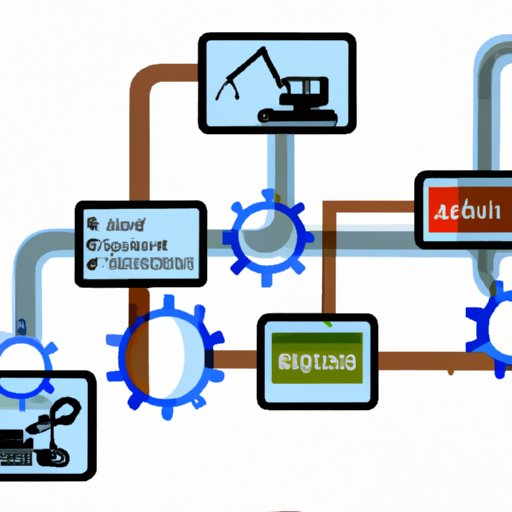An Overview of Automation Tools: What They Are and How They Work
Automation tools are used to automate repetitive tasks, freeing up time for other more important duties. Automation tools can be either software or hardware, depending on the nature of the task being automated. In this article, we’ll take a look at what automation tools are, how they work, and some examples of automation tools.
Definition of automation tools
Automation tools are computer programs or systems that are designed to automate specific tasks. These tasks can range from mundane activities such as data entry to more complex processes such as machine learning. Automation tools can be used to automate any task that can be performed by a computer.
How automation tools work
Automation tools are designed to take input from a user and use it to complete a task automatically. This input can come in the form of text, images, audio, video, or even voice commands. The automation tool then uses this input to complete the task, usually without any further input from the user. For example, an automation tool might be used to fill out forms or generate reports.
Examples of automation tools
There are many different types of automation tools available. Common examples include business process automation (BPA) tools, robotic process automation (RPA) tools, machine learning tools, and artificial intelligence (AI) tools. Each type of automation tool has its own set of features and capabilities that make it suitable for different tasks.

The Benefits of Using Automation Tools
Automation tools offer numerous benefits to businesses. They can increase efficiency, reduce costs, and improve accuracy. Here are some of the main benefits of using automation tools:
Increased efficiency
Automation tools can help businesses save time by automating tedious tasks. According to a study by McKinsey, “companies that have implemented automation technologies have seen productivity increases of between 20 and 30 percent.” This means that businesses can get more done in less time with automation tools.
Improved accuracy
Automation tools can also help businesses improve their accuracy. By eliminating human error, automation tools can ensure that tasks are completed correctly and to the highest standard. This can help businesses avoid costly mistakes and ensure that their products and services meet customer expectations.
Reduced costs
Using automation tools can also help businesses reduce their costs. Automation tools can eliminate the need for manual labor, allowing businesses to cut back on labor costs. Additionally, automation tools can help businesses reduce operational costs by streamlining processes and eliminating the need for expensive equipment.

Different Types of Automation Tools
There are several different types of automation tools available. Each type of automation tool has its own advantages and disadvantages, so it’s important to understand the different types before selecting one for your business.
Business process automation
Business process automation (BPA) tools are used to automate repetitive tasks such as data entry, document processing, and billing. BPA tools can help businesses streamline processes and improve efficiency. Some examples of BPA tools include Microsoft Flow, Zapier, and Autopilot.
Machine learning
Machine learning tools are used to automate tasks that require analysis and decision making. These tools use algorithms to analyze data and make predictions or recommendations. Machine learning tools can be used for a variety of tasks, including fraud detection, customer segmentation, and risk management.
Robotic process automation
Robotic process automation (RPA) tools are used to automate tasks that involve physical action. These tools can be used to control robots, move objects, and carry out other physical tasks. RPA tools are often used in manufacturing, healthcare, and logistics.
Artificial intelligence
Artificial intelligence (AI) tools are used to automate tasks that require intelligence and reasoning. AI tools can be used to automate tasks such as natural language processing, image recognition, and decision-making. AI tools can also be used to create intelligent chatbots that can interact with customers and provide them with personalized assistance.
Choosing the Right Automation Tool for Your Business
When choosing an automation tool for your business, it’s important to consider your specific needs. Before selecting an automation tool, you should identify which tasks you want to automate and evaluate different automation tools to see which one is best suited for your needs. Here are some tips to help you choose the right automation tool for your business:
Identifying your business needs
Before selecting an automation tool, it’s important to identify which tasks you want to automate. This will help you narrow down your choices and select the automation tool that is most suitable for your needs.
Evaluating different automation tools
Once you’ve identified your needs, you should evaluate different automation tools to see which one is best suited for your needs. Consider factors such as ease of use, cost, and features to help you make the best decision.
Understanding the cost of automation
It’s also important to understand the cost of automation. Automation tools can be expensive, so it’s important to factor in the cost when selecting an automation tool for your business.
Automation Tools and Their Impact on Productivity
Automation tools can have a significant impact on productivity. Automation tools can streamline processes, increase speed of completion, and reduce errors. Here are some of the ways automation tools can improve productivity:
Streamlining of processes
Automation tools can help streamline processes by eliminating manual steps and reducing the amount of time spent on repetitive tasks. This can help businesses complete tasks faster and free up time for other more important tasks.
Increased speed of completion
Automation tools can also help businesses increase the speed of completion of tasks. By eliminating manual steps, automation tools can help businesses complete tasks faster and increase overall productivity.
Reducing errors
Automation tools can also help businesses reduce errors. By eliminating manual steps, automation tools can help businesses reduce the risk of errors and improve accuracy.

Automation Tools for Improving Processes
Automation tools can also be used to improve processes. Automation tools can be used to automate manual tasks, enhance customer experience, and improve data quality. Here are some of the ways automation tools can be used to improve processes:
Automating manual tasks
Automation tools can be used to automate manual tasks such as data entry and document processing. This can help businesses eliminate tedious tasks and free up time for more important tasks.
Enhancing customer experience
Automation tools can also be used to enhance customer experience. Automation tools can be used to create intelligent chatbots that can provide customers with personalized assistance. Automation tools can also be used to automate customer service tasks, such as responding to customer inquiries.
Improving data quality
Automation tools can also be used to improve data quality. By automating data entry and validation tasks, automation tools can help businesses ensure that their data is accurate and up-to-date.

How to Get Started with Automation Tools
If you’re ready to get started with automation tools, there are a few steps you should take. First, you should research available tools to find the one that best fits your needs. Once you’ve selected a tool, you should set up automation systems to ensure that the tools are properly configured. Finally, you should test and monitor results to ensure that the automation tools are working as expected.
Automation tools can help businesses streamline processes, increase efficiency, and reduce costs. From business process automation to machine learning, there are many different types of automation tools available. When selecting an automation tool, it’s important to identify your specific needs and evaluate different automation tools to see which one is best suited for your needs. With the right automation tool, businesses can reap the benefits of increased productivity and improved processes.
(Note: Is this article not meeting your expectations? Do you have knowledge or insights to share? Unlock new opportunities and expand your reach by joining our authors team. Click Registration to join us and share your expertise with our readers.)
